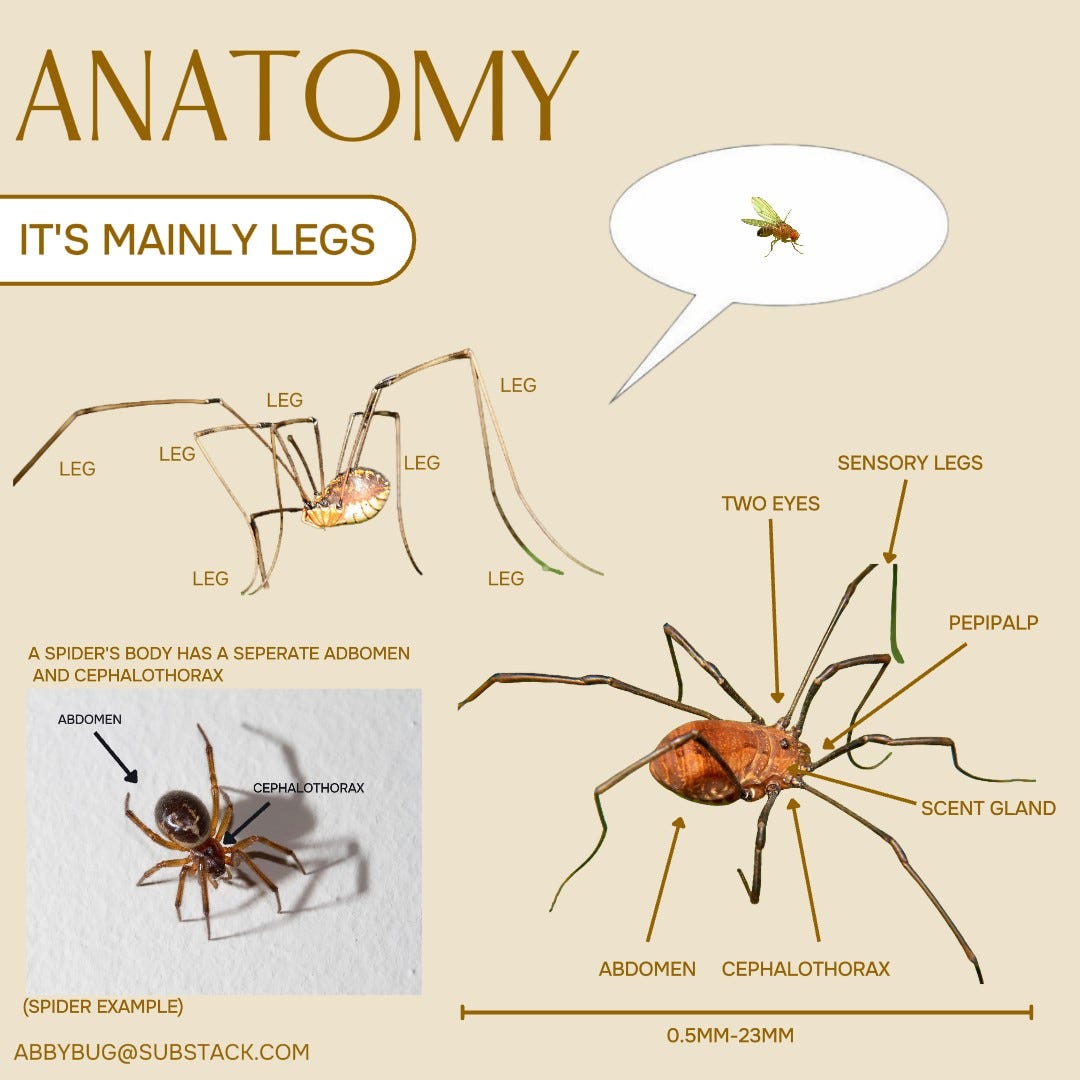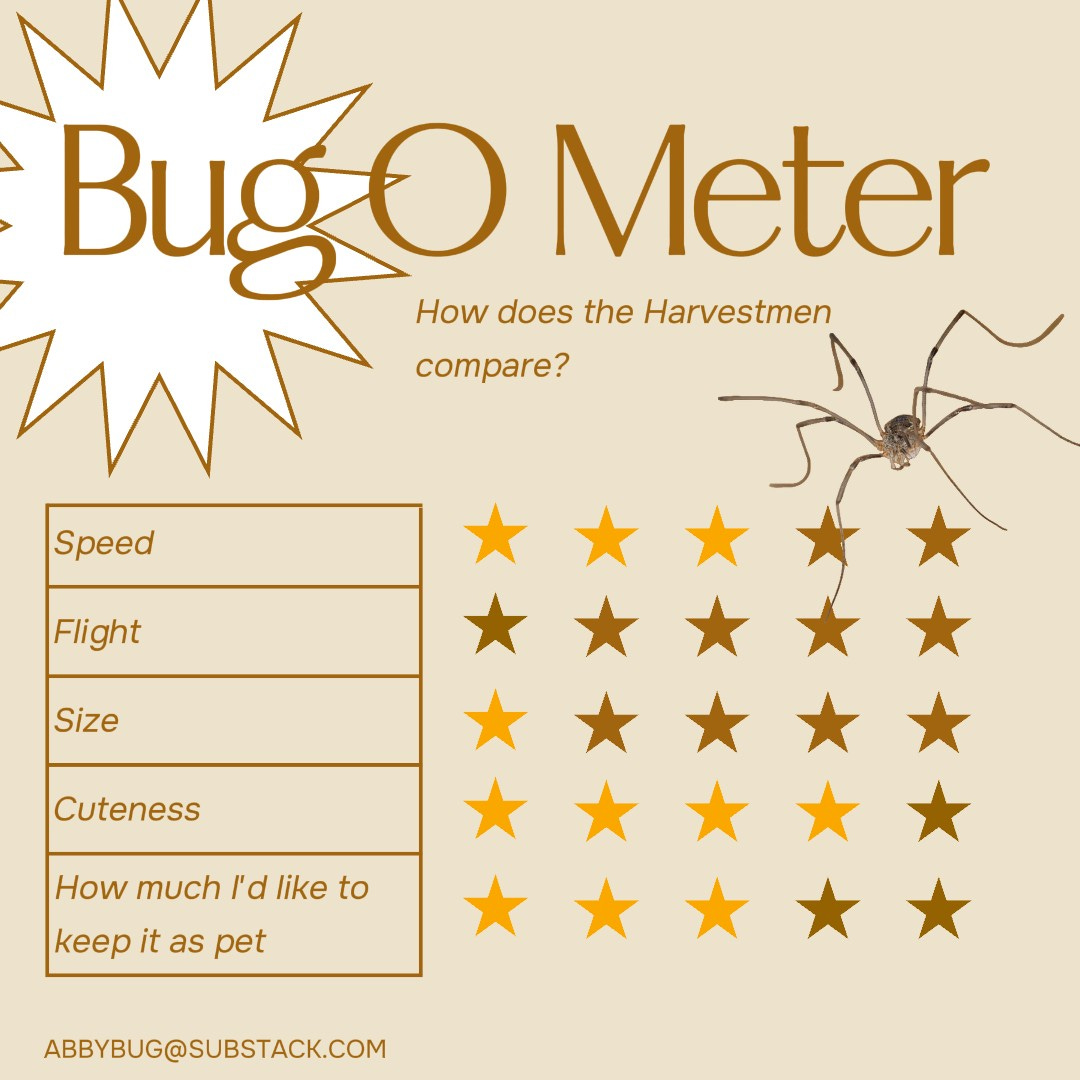Introducing the species most commonly mistaken for a type of spider, the“Daddy Long Legs” (Harvestmen), which belongs to a group of arachnids known as “Opiliones”. There are over 6000 species of harvestmen. Their identification with spiders due to their physical appearance has been disputed, as they are not actually closely related. Main distinctions between spiders and opiliones include the separation of the cephalothorax and abdomen. Normal, lame spiders have two segments to their bodies, whereas harvestmen have one fused cephalothorax and abdomen that is difficult to distinguish.
Physical Description
As mentioned previously, harvestmen have an oval shaped compact body, consisting of the cephalothorax and abdomen. It’s length ranges from 0.5mm to 23mm, with their legs being approximately 7 times the length of their bodies. They only have 2 eyes, though in recent studies it has been revealed that ancestors of harvestmen used to have four additional eyes. Their eyes are used as light sensors, rendering them almost blind, which is why their second pair of legs have evolved to be sensory organs. Scent glands are located at the front of the body that can release a foul odour to deter predators. Pedipalps are attached to the front of the body which can be used for grasping. Harvestmen do not make webs, as they don’t produce silk. Poor guys.
Life Cycle
Harvestmen primarily feed on smaller insects, with some species eating dead organisms and others preferring to actively hunt prey. Harvestmen reproduction involves the female harvestmen storing the sperm at the tip of the ovipositor (a tube shaped organ used for laying eggs). The eggs are fertilised then laid in soil. Amongst some species of harvestmen, parental care is practised primarily by the male harvestmen, who cleans and guards the eggs from predators (this is new!).
Location
Harvestmen primarily live in humid climates around the world. Due to how ancient the species is, it is believed they inhabited Pangea which is why they are now found globally.
Aggregations
An aggregation is a group of 3 or more harvestmen which can stay in the same place for months at a time. Their bodies remain 0-5cm apart, and can be classified as dense aggregations (hundreds to thousands of individuals) or loose aggregations (dozens to a few hundred individuals). To deter predators, the aggregation uses the mass release of scents as well as a collective bobbing motion for intimidation.
Check out this video of an aggregation of daddy long legs, they remind me of the soot sprites in Totoro.
Misconceptions
There are many misconceptions surrounding these creepy crawlies, from rumours I’ve heard since primary school to actual disagreements between researchers. Firstly, it’s common to be told around Australia that daddy long legs are the most venomous spiders, but that they are just too small to bite into human flesh. Two things are wrong about this statement. As we have learnt previously, daddy long legs are not actually spiders. Additionally, harvestmen don’t actually have venom glands, rather just grasping claws (pedipalps). They are completely harmless to humans.
Harvestmen have a 60% chance of losing a leg throughout its lifetime. It is commonly believed that these legs can grow back, which is not true. Legs are sometimes sacrificed in order to escape predators which is a form of autonomy, similar to how lizards break off their tails when captured or stuck. Harvestmen are able to live with less limbs, though their speed and mobility is decreased.







